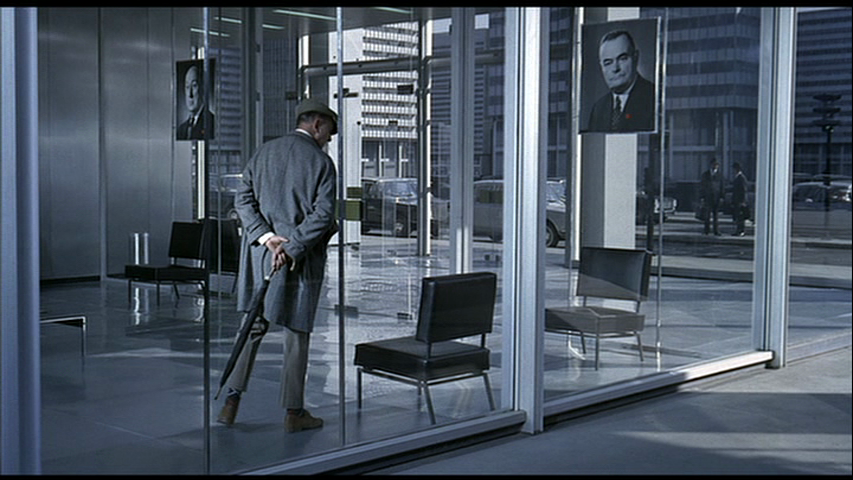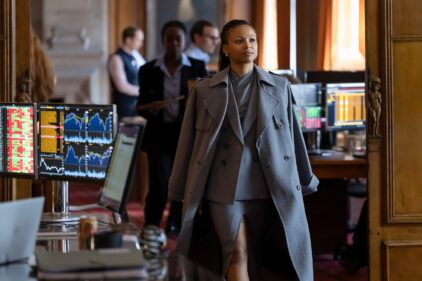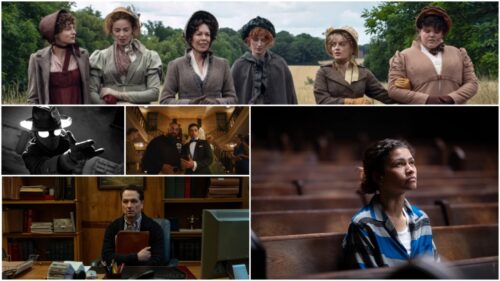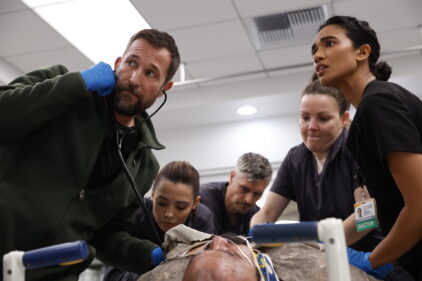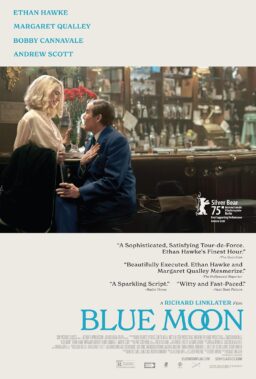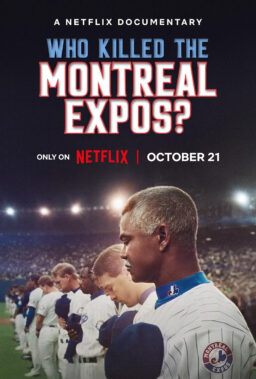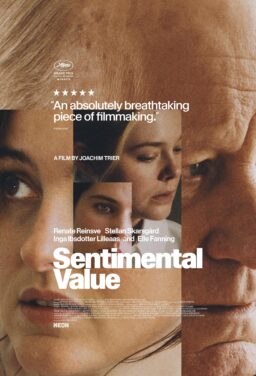Although his cinematic career would extend from the mid-’30s to the mid-’70s, the filmography of the late French comic filmmaker Jacques Tati (1908-1982) consists of only six feature films, along with a handful of short subjects on which he served as a director, writer and/or actor. If one goes strictly by the numbers, this is not much—Steven Soderbergh has cranked out as many titles just in the space of a couple of years—and in the grand scheme of things, there is perhaps a tendency to marginalize his contributions to the the world of cinema. Sure, he had a couple of huge international critical and commercial successes—one of them even went on to win the Oscar for Best Foreign Language Film—but he followed those up with a wildly expensive and elaborate film that failed so completely that, having financed it himself, he lost his home and the rights to his films and found it increasingly difficult to get his subsequent efforts produced and distributed properly.
And yet, art is not strictly about the numbers (or at least it shouldn’t be), and if one looks beyond them in Tati’s case, one discovers that despite the paucity of his output, his films contain a virtual embarrassment of riches. Combing the crack comic timing and predilection for physical humor over verbal that he developed in his early days as a mime comedian working in the music halls and cabarets of Paris, an eye for staging comedic set-pieces in a manner that was both hilarious and formally exquisite and a production approach that allowed his work to convey a quirky, hand-made feel that caused them to stand out, not just from the other screen comedies of their time but of all films in general. (His approach was so singular that he would not only think up and film a new joke for a movie that he filmed and released 20 years earlier, he would do it so deftly that the new footage would feel as if it had been there all along.) These are qualities that are essentially timeless and as a result, while other comedies made during Tati’s era can now seem labored and stilted, his are as fresh, dazzling and hilarious today as they were when they were first released, perhaps even more so.
While it was once difficult to see Tati’s films in anything close to the manner in which they deserved to be presented, recent years have seen a number of restorations and rereleases that have culminated in the lovely Criterion box set “The Complete Jacques Tati,” a new seven-disc Blu-ray collection that offers viewers exactly what the title promises. The set contains the six feature films—”Jour de Fete” (1949), “Monsieur Hulot’s Holiday” (1953), “Mon Oncle” (1959), “Playtime” (1967), “Trafic” (1971) and “Parade” (1974)—in both their original release versions and, in the case of the first three films, additional variant cuts that he prepared over the years as well as a separate disc containing three shorts that he wrote and appeared in (“On Demande une Brute” [1934], “Gai Dimanche” [1935] and “Soigne ton Gauche” [1936]), two that he directed (“L’Ecole des Facteurs” [1946] and “Cours du Soir” [1967]) and two made by Tati’s daughter, Sophie Tatischeff (the award-winning “Degustation Maison” [1977] and “Forza Bastia” [1978], a soccer documentary that was actually begun by Tati and completed by Tatischeff after his passing). Each disc in the set also contains a number of interviews—both current ones conducted with cinema experts and archival selections featuring Tati himself—documentaries, visual essays, an introduction to “Playtime” by Monty Python member Terry Jones, trailers and the proverbial much much more. Rarely does the complete output of a filmmaker of Tati’s stature get the sort of all-in-one treatment that has been afforded here, and the end result has been presented with such care and grace that the entire set is a must-see for everyone from the most ardent of cineastes to little kids who revel in the glories of silly slapstick regardless of its country of origin.

The only problem with writing about Tati and his style of filmmaking is that what makes his work so distinctive—his beautiful visual style, crack comic timing and a cheerfully democratic narrative approach in which anyone can take center stage at any time—can be difficult to describe. Take his first feature, “Jour de Fete,” for example. The premise sounds simple enough at first blush—a traveling fair comes to a small village and after a visit, the local postman (Tati, playing a character he first introduced in the short “L’Ecole des Facteurs”), inspired in equal parts by a film promoting the efficiency of the Parisian postal service and the wine consumed during the day, attempts to apply the Parisian approach to his delivery duties with chaotic results—and if I wanted to, I could discuss the central theme of man’s increasingly absurd over-reliance on technological advances. However, to do so would utterly fail to convey the charm, beauty and hilarity on display throughout, as Tati mines his deceptively simple premise for comedic gold. Although it may seem slightly out of step with Tati’s later films because of his greater emphasis than usual on dialogue to move the story along, there are still any number of glorious bits to be found here—I especially like the opening gag involving the postman on his bike struggling to avoid a pursuing wasp—and if it weren’t for the circumstances surrounding its production that caused it to be unavailable in its proper form for so long, I am sure that it would be generally regarded as a comic masterpiece.

With his next two features, “Monsieur Hulot’s Holiday” and “Mon Oncle,” Tati would introduce his most lasting and beloved creation—the endearingly goofy and slightly out-of-step Monsieur Hulot—and create an international sensation in the process. He is essentially a slightly clumsy everyman who serenely goes from situation to situation without ever quite recognizing the chaos that he inadvertently initiates along the way. “Monsieur Hulot’s Holiday,” in which Hulot tries to enjoy a brief vacation at a seaside resort in Normandy, hardly seems to have any plot at all. Nevertheless, it takes a premise to which most viewers can easily relate and develops an amazing array of inspired gags that are sweet and silly and yet maintain some bite and are almost purely visual in execution. As for Hulot, Tati could have easily transformed him into a typically clueless bourgeois clod for comedic purpose, but instead depicts him and his antics with genuine affection, a feeling clearly shared by audiences, who made the film into a worldwide hit.

By comparison, “Mon Oncle” is a slightly more straightforward comedy in the sense that it has a slight whisper of what might be described as a plot: Hulot goes off to stay with his sister and her family in their gruesomely ultramodern home, gets a job in a plastic hose factory that is only slightly more mechanized in nature and winds up wreaking havoc on both, much to the delight of his young nephew. By introducing the relentlessly clumsy and irrevocably human Hulot into this soulless and plasticized milieu, Tati is clearly making points about the increasingly sterile nature of contemporary life. While that may not sound like the most radical premise upon which to hang a movie, it certainly was at the time in which it was made, a period in which everything new was automatically determined to be better than what had proceeded it. Once again, Tati managed to come up with a number of great gags and set-pieces, many of which involved that most omnipresent of mechanical marvels, the automobile—in one, a ghastly-looking new car that has just been looked upon as some rare exhibit pulls out into the street where it joins any number of similar vehicles and an exquisite version of the classic bit involving a big car trying to squeeze into a parking space that is far too small for it. While it may lack the completely free-form nature of Tati’s previous Hulot film, it is perhaps still a more satisfying work when all is said and done. Again, the film was a massive worldwide hit, and would earn Tati the Best Foreign Language Film Oscar.

About the only person not particularly enthralled with the success of the Hulot character was Tati himself. While he knew that including him in his next project was pretty much a necessity, that did not necessarily mean that the film in question had to revolve solely around him. Instead, he determined that, as he would tell critic Penelope Gilliat in an interview a decade later, “The film is about everybody.” That film would be “Playtime,” and it would prove to be not only his masterpiece but one of the most astonishing comedic creations ever put on the big screen. The plot is virtually nonexistent; over the course of roughly 24 hours, a diverse group of people—businessmen, nuns, stewardesses, American tourists, Hulot and a number of people vaguely resembling Hulot—negotiate a gleamingly soulless cityscape festooned with glass, steel and highly organized corridors that is meant to represent modern-day Paris, but which is so impersonal that it could be any major metropolis. (Save for a brief glimpse of the exterior of Orly Airport at the beginning, the only recognizably Parisian items on display, such as the Eiffel Tower, are seen only as reflections in the glass and steel.) Hulot tries unsuccessfully to meet up with another businessman, only to be swept away by a crowd heading to a trade show offering up any number of oddball gadgets for him to fumble with. He also catches a glimpse of the prettiest of the American tourists but is perennially stymied in his attempts to connect with her as well. In a nearly hour-long sequence that dominates the second half, all of the characters (and many more) converge upon the opening night of a restaurant/nightclub called the Royal Garden and party on into the night even as the barely completed structure essentially collapses around them amidst the frenzy of activity.
To bring all this to life and to properly control the chaos, Tati went to the outskirts of Paris and literally built his own city—a massive set consisting of real buildings (some with moveable walls and some built on rails) and real streets that took five months to build out of 11,700 square feet of glass, 486,000 square feet of concrete and 31,500 square feet of lumber, equipped with real water pipes, electrical cables and heating devices. All of this cost upwards of $800,000 in 1967 money, and was financed by Tati personally by putting up both his home and production company as collateral. To add to the spectacle, Tati filmed the entire thing in the super-sized 70mm film process that would allow him to better capture both the size and scope of what he was going for and to better represent his comment about the film being about everybody. Virtually every corner of his jumbo-sized frame is teeming with incident. By democratically refusing to focus on any one aspect, he creates a fascinating work that can literally change from viewing to viewing depending on what part of the frame one chooses to focus upon at any given time. Although glorious throughout, the film moves to the truly sublime once it hits the Royal Garden and Tati unleashes one of the greatest sustained set-pieces in film history, a riot of sound and vision that somehow gets funnier as it goes on, especially as everything literally begins to fall apart. (In the most inspired bit, an “invisible” glass door is shattered but the doorman continues to do his job by miming his duties.)

Unfortunately, having literally sunk everything (about $3,000,000) into his pet project, Tati would find himself facing a series of calamities to rival those of Hulot himself. He determined that the film should only be screened in 70mm in order to properly convey his vision—a nice thought but there were too few theaters in Paris equipped to project it in this manner. Eventually, he would authorize a 35mm presentation for release but it opened in Paris in May of 1968, not the best time for one to open a film there. After that inauspicious start, there was relatively little interest in showing it in other countries—it would not premiere in the U.S. until 1972—and when it was, it was hardly ever seen in 70mm. Tati would lose his house and his films, and it would only be in 1977 that he would finally regain the rights to the latter. In the years since it debuted, it was regarded by many as a folly of massive proportions, but a couple of decades later, the film would finally be restored and presented in its intended form and audiences around the world were stunned to discover that Tati’s exploration of the confusion caused by a society increasingly defined by technology was not only a grandly hilarious comedy but was perhaps even more relevant in current times than it was back when it was first made. (And if you ever get a chance to see the film in 70mm, take it no matter the amount of time or money involved—I have seen it in that format three times in my life and count them as among my most treasured moviegoing experiences.)
Because of the failure of “Playtime,” Tati’s last two films were largely overlooked when they came out and still have not quite received their due even from critics who should know better. “Trafic” finds him goofing on man’s dependence on the automobile, an invention that would inspire any number of jokes throughout his career by following Hulot, now the chief designer of an auto manufacturer, as he navigates his company’s latest creation, a ridiculously outfitted “camping car” (imagine a goofier version of the car that Homer Simpson designed for half-brother Herb), from Paris to an auto show in Amsterdam and encountering any number of mishaps along the way. Sort of a kinder, gentler version of Jean-Luc Godard’s “Weekend,” the film may lack the epic scope of its predecessor but more than makes up for it with an astonishing variety of sight gags and mishaps that concludes on a surprisingly somber note when Hulot, whose car has cheered virtually all those who encounter it, fails to get it to the show on time and is fired. Indeed, that would carry over into real life as well as “Trafic” would prove to be Hulot’s last hurrah, though one wonders what might have happened if Tati had gotten his way; he had actually planned a final film entitled “Confusion” that would have included the character’s on-screen death.
Instead, Tati would conclude his filmmaking career with “Parade,” a low-budget effort, produced cheaply on video for Swedish television, that would find him going full circle by returning to the sort of stage silliness and pantomimes with which he began his performing career. On the surface, the film appears to be little more than a collection of acts—mimes, singers, jugglers, acrobats and the like (with Tati himself, naturally, as the ringmaster)—performing before a group of spectators in a theater. As it progresses and the line between performer and spectator begins to blur in increasingly fascinating and entertaining ways, and the antics in the stands begin to rival those on the stage. Although the least of Tati’s features, both in reputation (it would receive only the scantest of theatrical distribution and that would only come years after it was produced) and in quality, “Parade” still has enough going for it to warrant rediscovery—Tati’s restaging some of the pantomimes of his early days is undeniably interesting without getting buried in schmaltz or nostalgia, and there are still a number of funny gags on display, including several involving motorcycle helmets, of all things.
Best of all is the beautiful epilogue in which a young boy and girl, whom we have glimpsed here and there throughout the film, take to the stage themselves and attempt to recreate the acts that they have just seen with some props that have been left on the stage. There is nothing especially elaborate to this sequence, but the delicate manner in which Tati captures the magic of little kids trying to capture the magic they have just experienced is funny, charming and heartfelt. It serves as the ideal final note to one of the great filmographies, one that, thanks to “The Complete Jacques Tati” set, can at last be properly seen, evaluated and, most of all, enjoyed by audiences both young and old.

